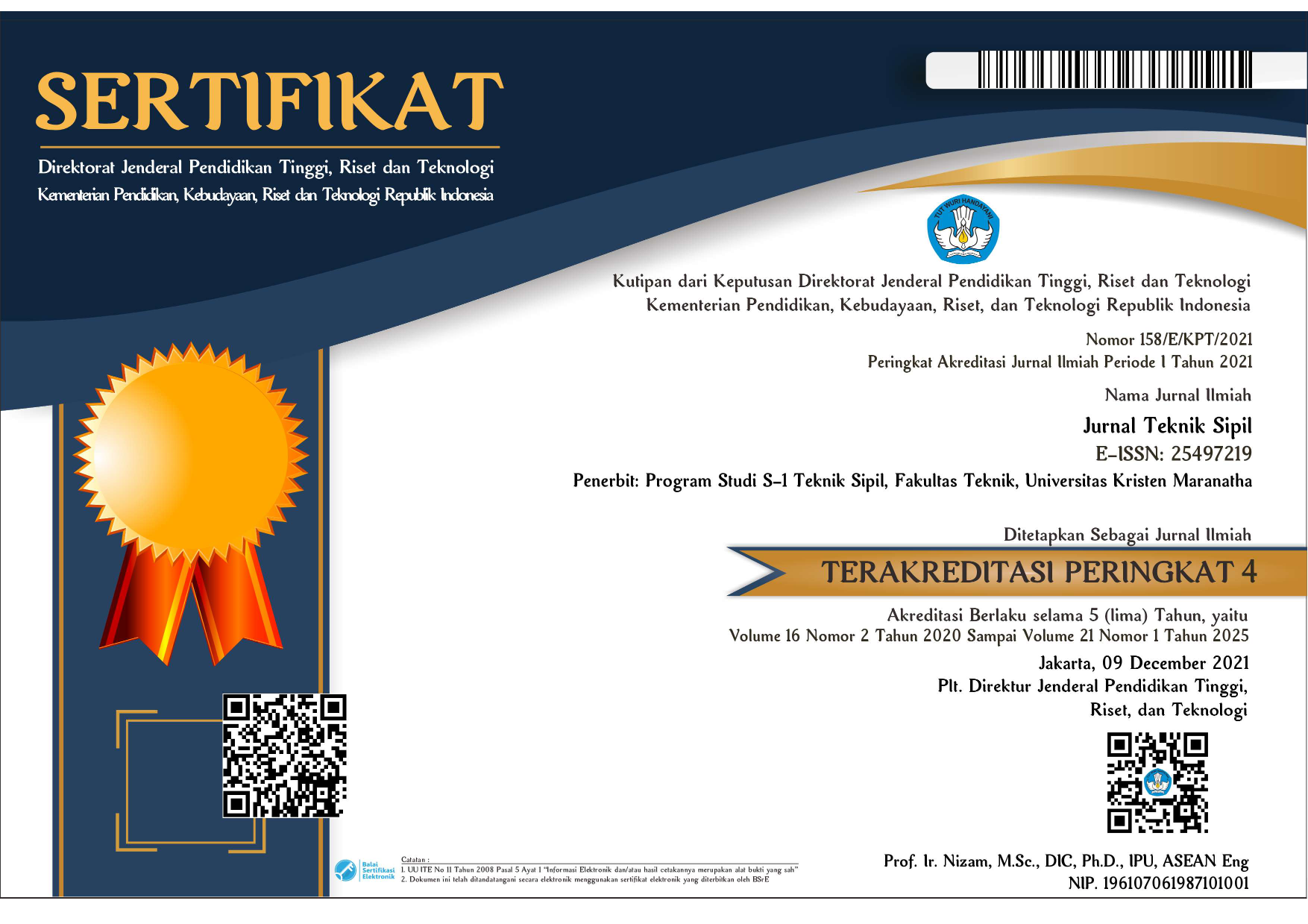COMPARISON OF MRF AND CBF STRUCTURAL RESPONSE TO EARTQUAKE IN OFFICE BUILDING SURABAYA
DOI:
https://doi.org/10.28932/jts.v18i1.3623Keywords:
Concentriccaly Braced Frame, Earthquake, Moment Resisting Frame, Pushover AnalysisAbstract
Indonesia is a country that prone earthquakes. Therefore, knowledge of earthquake-resistant building construction is needed in reducing the risk of damage caused by earthquakes. There are several methods of earthquake-resistant construction planning, one of which is the pushover analysis method. Pushover is a nonlinear static analysis method in which the structure is subjected to gravity loading and displacement-controlled lateral loads which continue to increase through elastic and inelastic behavior until the final condition. One of the popular construction materials in structural planning is steel construction, which has a uniform structure, lightweight, strong, and easy to work with. In modeling earthquake-resistant structures, several popular models are the MRF and CBF models. MRF is a structural configuration model configured on beams that are firmly connected to columns. Based on a rigid beam-column connection, the moment frame cannot be moved laterally without bending the beam or column depending on the connection geometry. Results The case study on the comparison of the two structural models concluded that in the design of earthquake-resistant steel structures using the pushover method, it was found that the MRF structure had higher ductility than the CBF, namely 2.1:1.6.Downloads
Download data is not yet available.
Downloads
Published
2022-04-01
How to Cite
Santoso, A. N., & Sumaidi. (2022). COMPARISON OF MRF AND CBF STRUCTURAL RESPONSE TO EARTQUAKE IN OFFICE BUILDING SURABAYA. Jurnal Teknik Sipil, 18(1), 152–165. https://doi.org/10.28932/jts.v18i1.3623
Issue
Section
Articles


















